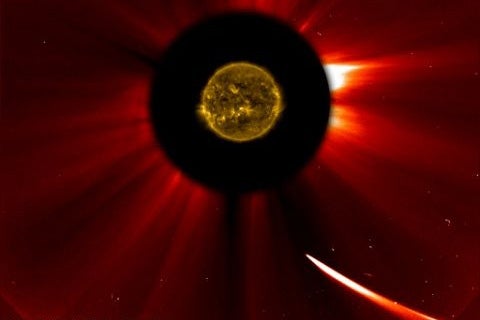The Independent's journalism is supported by our readers. When you purchase through links on our site, we may earn commission.
End of the world: Humans could be killed off by hail of comets from passing stars
Nearby stars could fling comets at Earth, bringing life to an end — if we’re still here

Humans could be wiped out by two dwarf stars that will drop a torrent of comets onto Earth, according to a new theory.
If the comets do kill of humans, it could mean that we are wiped out ahead of the the normally expected ways — an asteroid crashing into us or the death of the sun.
A number of stars could come close to our sun in the next few million years, according to estimates by CAL Bailer Jones at the Max Planck Institute for Astronomy in Heidelberg. If they did so, their gravity could pick up one of the many comets in the Oort cloud, a region in space full of icy objects, and throw one towards Earth.
The star most likely to hit us is called Hip 85605, which has a 90% chance of coming nearer than 0.65 light years from us. Another, known as GL 710, also has a good chance of passing near enough by to upset the Oort cloud and throw down the comets that could bring life on earth to an end.
But it’s not set to happen for millions of years, by which time there might be nothing left to destroy anyway. Hip 85605 is not set to show up for as long as half a million years, and GL 710 could take nearly three times as long.
While Bailer-Jones believes there to be a high chance of such an event happening, the data could be unreliable, he said.
The estimates use information from the European Space Agency’s Hipparcos spacecraft, which assembled its star data in the 1990s, according to the New Scientist. The follow-up spacecraft should enable us to get a new starmap and be able to work out the possibility of such an event with more accuracy.
Subscribe to Independent Premium to bookmark this article
Want to bookmark your favourite articles and stories to read or reference later? Start your Independent Premium subscription today.

Join our commenting forum
Join thought-provoking conversations, follow other Independent readers and see their replies